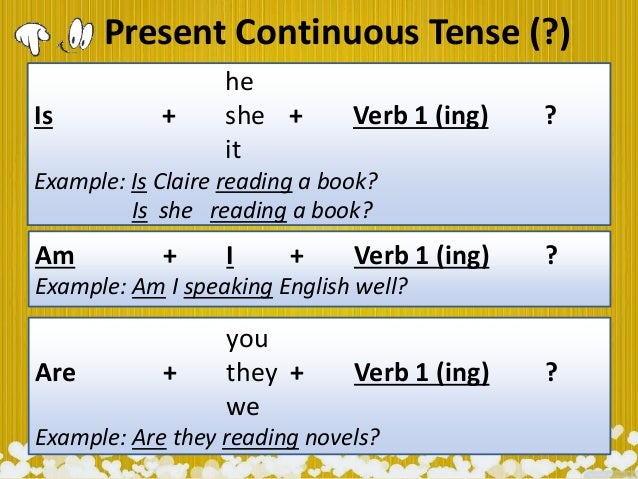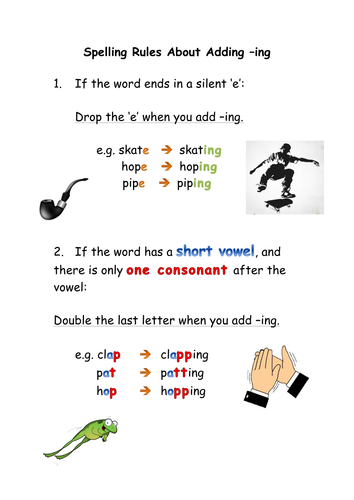INTRODUCCION
Sigue el orden de la pagina (de arriba abajo) y muy importante, TOMA NOTA.
- Primero veremos como formar verbos con ING, las reglas que hay al respecto.
- Luego pasaremos a la estructura y las funciones del Presente Continuo.
Verbs with -ING (5 Min)
Take a look at the following image:
(Image #1)
Watch the following video. Teacher Alejo Lopera will help you to understand how to add ING to some verbs in English.
Now, analyze the following image and take notes to these rules, THEY ARE VERY IMPORTANT!
(Image #2)

FORMACIÓN DEL «PRESENT CONTINUOUS» (10 Min)
El «present continuous» de cualquier verbo se compone de dos partes: el presente del verbo to be + el «present participle» del verbo principal.(Para formar el «present participle»: raíz+ing, e.g. talking, playing, moving, smiling) (Si aun no tienes claro como formar los verbos con ING puedes ver el siguiente video de lo contrario pasa a la imagen)
(Image #3)

(Image #4)
Analyze the following examples and compare the structure to the first image (image #3)
(image #5)
MORE EXAMPLES











(Mira los ejemplos en forma interrogativa y responde la pregunta)
(PREGUNTA #1)
WHAT IS THE STRUCTURE FOR QUESTIONS?
FUNCIONES DEL «PRESENT CONTINUOUS»
Como ocurre con todos los tiempos verbales del inglés, la actitud del hablante es tan importante como el momento en que ocurre la acción o el evento. Al emplear el «present continuous», nos estamos refiriendo a algo que no ha terminado o está incompleto
EL «PRESENT CONTINUOUS» SE UTILIZA:
- para describir una acción que está teniendo lugar en este momento: You are using the Internet. You are studying English grammar.
- para describir una tendencia o una acción que está sucediendo en la actualidad: Are you still working for the same company? More and more people are becoming vegetarian.
- para describir una acción o evento futuros que ya están programados: We’re going on holiday tomorrow. I’m meeting my boyfriend tonight. Are they visiting you next winter?
- para describir una situación o evento temporales: He usually plays the drums, but he’s playing bass guitar tonight. The weather forecast was good, but it’s raining at the moment.
- con «always, forever, constantly», para describir y enfatizar una sucesión de acciones repetidas: Harry and Sally are always arguing! You’re constantly complaining about your mother-in-law!
Resumen y conclusión (15 Min)
Tomando en cuneta la información suministrada anteriormente mira los siguientes 2 videos donde se explicará todo lo anterior mencionado, recuerda TOMAR NOTA.
First video:
Second video:
Finalmente, respondiste correctamente la pregunta #1 acerca de cual es la estructura para las preguntas con el presente continuo.
Si respondiste correctamente tendrás algo como esto.

FELICIDADES, HEMOS CULMINADO LA SESIÓN #1,
YA ESTAS LISTO PARA TOMAR LA SIGUIENTE SESIÓN (SESIÓN #2) CUNADO ESTÉS LISTO. RECUERDA QUE PUEDES VOLVER A LA SESIÓN 1 CUANTAS VECES SEA NECESARIO.




